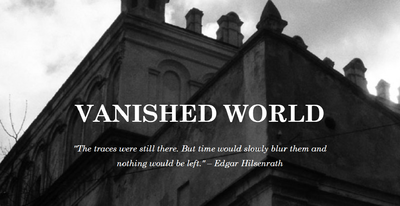 When I first began writing my grandmother’s story and turning her recollections into what would eventually become a book, the title I originally had in mind was The Breadbasket. To me, this encompassed much what the people and places in the book were about. Ukraine was known as the Breadbasket of Europe because of its huge grain production. My great-great-grandfather Berl was a grain trader. And bread, or lack of it, played a big role in the family story, from the mill my family owned in the latter part of the 19th century and early 20th, to the prosperity Berl built through his thriving business, to his wife Pessy’s ability to make a ball of dough dance as she kneaded and shaped it in mid-air, and the challah on the Sabbath table. And later, there were the Bolshevik grain requisitions, the great hunger that followed the revolution when there was no bread to be had and my grandmother travelled the land with a basket on her back, bartering food to keep her family alive. But a literary editor who guided my early manuscript advised me to ditch the title. You need something more evocative and compelling, he said. Several weeks later, I finally settled on A Forgotten Land. This was a success and I was pleased with the change. The new title evoked the terrible loss suffered by towns and villages across a wide swathe of Eastern Europe, along with the people who lived there and their way of life. In the Pale of Settlement of the Russian Empire, pogroms, war, famine, disease and emigration had torn Jewish families apart from the 1880s onward and seared the heart out of Jewish communities. The Nazis, of course, would do the rest, not just there but across Europe. The Pale did indeed become a forgotten land, a network of once vibrant communities whose people had all emigrated or died. Three-quarters of a century on from the Holocaust, many people are working hard to bring to light the remnants of the deserted shtetls, to remind us of these communities that have been forgotten for so long. I will highlight just two projects, but please feel free to add others to the comments at the end of this article. The first is a blog called Vanished World, which documents Cologne-based photographer and writer Christian Herrmann’s travels around Eastern Europe and elsewhere in search of visual traces of the Jews who once lived there - destroyed or misappropriated synagogues, overgrown cemeteries, tombstones in the street paving, traces of home blessings on door jambs. “Neglected Jewish cemeteries, ruins of synagogues and other remains of Jewish institutions [are like] stranded ships at the shores of time. The traces of Jewish life are still there, but they vanish day by day. It’s only a matter of time until they are gone forever,” he says. His articles and photographs are both a commemoration and an act of justice towards the men, women and children who died as innocent victims in the Holocaust, and an act of justice to those who survived as well. Christian’s photographs are beautiful and his commentaries on his travels tell a repeated and all-too- depressing tale of crumbling synagogues that were later used as museums, offices or factories during the Soviet era, fragments of tombstones incorporated into buildings or unearthed during construction works, and long-forgotten Jewish cemeteries that are now parks or wastelands. Another project is taking place in Ukraine, where Vitali Buryak, a software engineer from Kiev, has taken on the immense task of attempting to catalogue hundreds of shtetls. He began by creating lists of every settlement with a historical Jewish population of more than 1,000 for each gubernia (province) in central and eastern Ukraine. “My plan is very simple – to write at least a small article for each place on my list,” he says. His articles include old photographs and maps, archival documents, historical references and information about local families as well as numerous photographs of his own. Vitali only recently learnt of his own Jewish roots, and decided to offer his services as a tour guide for Jewish visitors from abroad. One of his early tours brought him to the town of Priluki. “Priluki is the place where I was born, and my grandma is still living there. I contacted the head of the local Jewish community and he showed me places that I didn’t know about before! In my city, where I was born! My grandma didn’t show me the synagogues, she didn’t show me Jewish cemetery, she didn’t show me the Holocaust killing sites, or the sites of the ghetto. I’ve walked on this street, I’ve seen this building before. But I didn’t know it was a synagogue. And it was a shock for me,” he recounts. “I decided to make this website in dedication to the Jews of Ukraine. The purpose of it is the gathering of information and resources from the remaining Jewish communities in Ukraine, as well as the ones that have been destroyed” Vitali says. Vitali’s website can be found here http://jewua.org/ And the Vanished World blog can be found here https://vanishedworld.blog/
0 Comments
Leave a Reply. |
Keeping stories aliveThis blog aims to discuss historical events relating to the Jewish communities of Ukraine, and of Eastern Europe more widely. As a storyteller, I hope to keep alive stories of the past and remember those who told or experienced them. Like so many others, I am deeply troubled by the war in Ukraine and for the foreseeable future, most articles published here will focus on the war, with an emphasis on parallels with other tumultuous periods in Ukraine's tragic history. Archives
March 2024
Categories
All
|
 RSS Feed
RSS Feed
